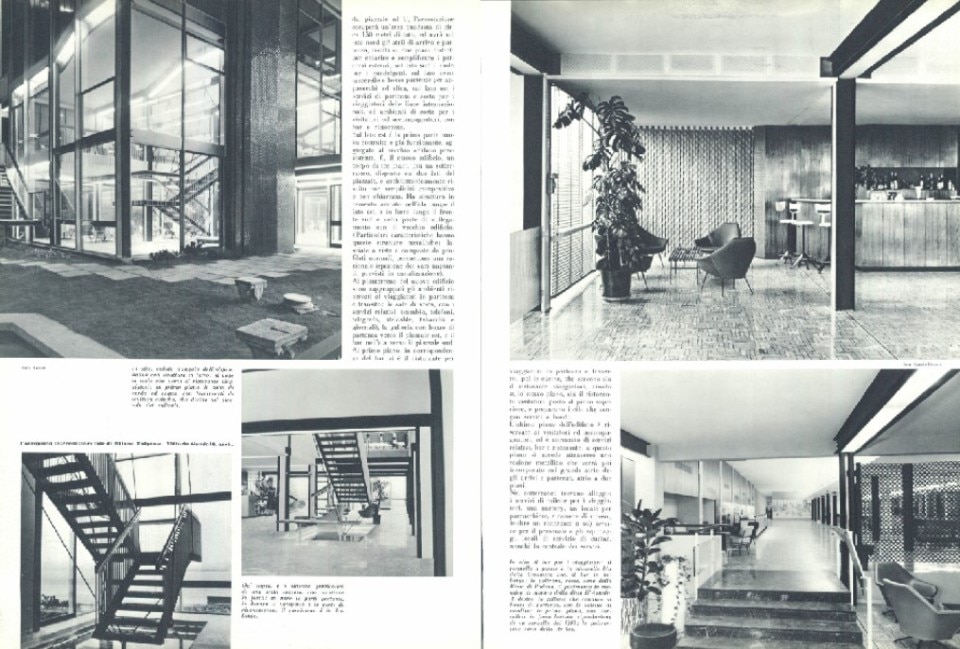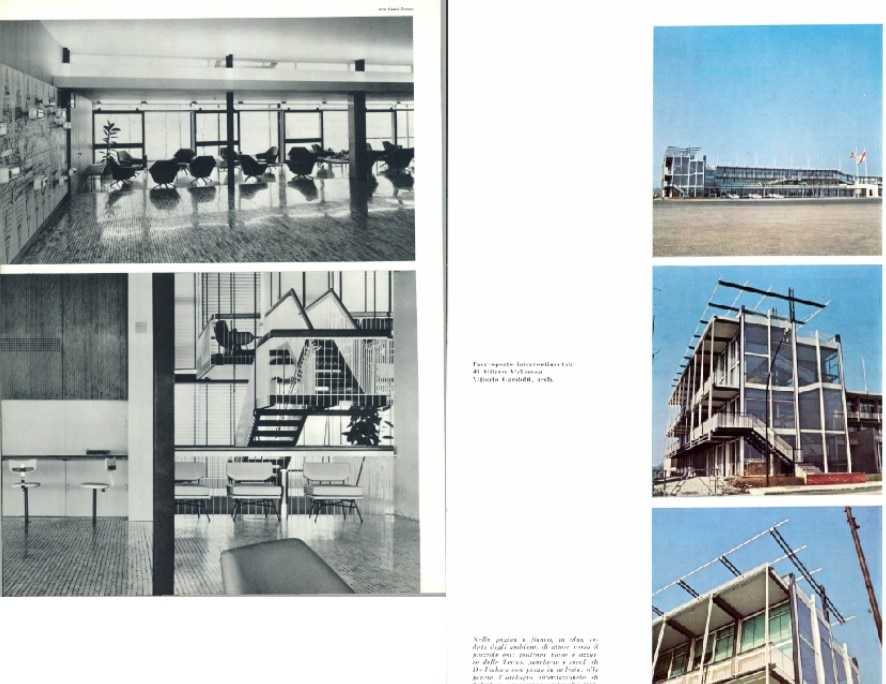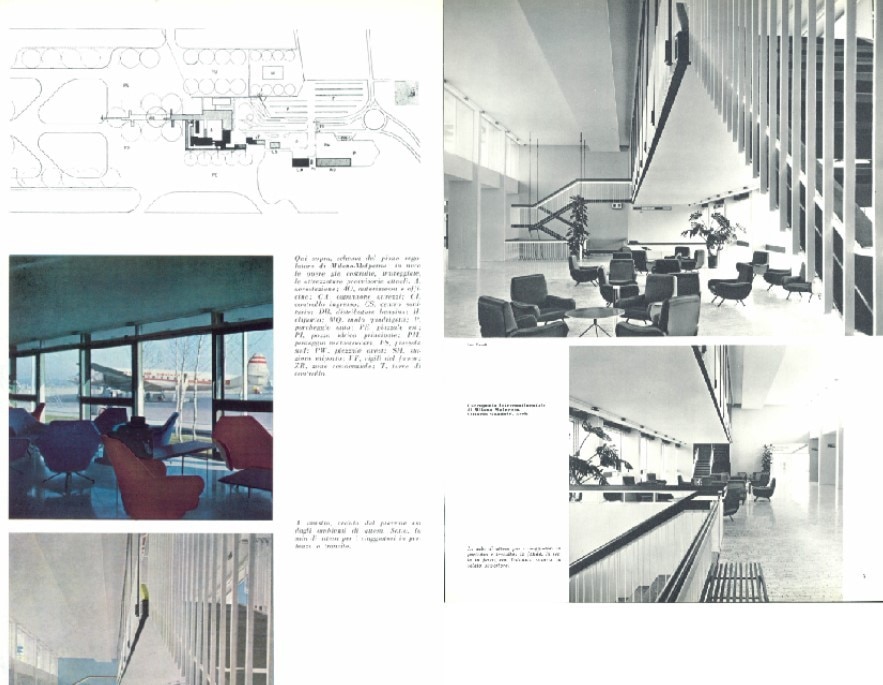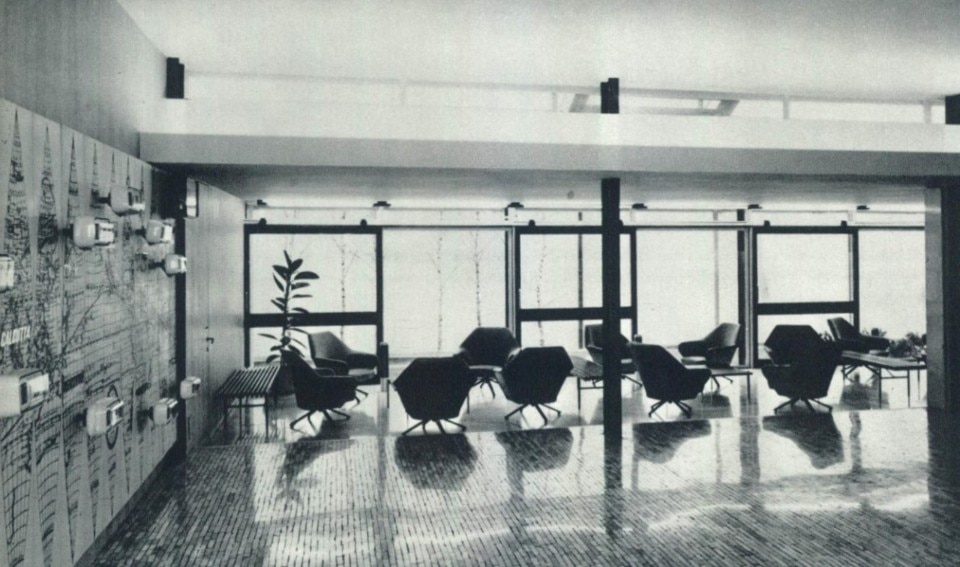When, by the end of the World War II, the volumes of civil scheduled flights began to grow exponentially, and the routes to become more regularly long, in support of the much more urban Forlanini airport (Linate), the city of Milan invested in an airstrip that stood quite far away – 45 km – so that it was initially named Aeroporto Città di Busto Arsizio. It is the airstrip of the Malpensa farmstead where Agusta and Caproni – not by chance the names of famous helicopters and biplanes manufacturers – had conducted their experiments since the turn of the century, and which since the 1950s, would become Milan’s airport for intercontinental flights. Today it has the appearance of the large Malpensa 2000 terminal, with its spaces initially conceived by Sottsass to narrate an Italy of humanism and nature, amidst opaque greens, wood and stone. In 1959, by the opening of the first passenger terminal, part of the project by Vittorio Gandolfi and Francesco Aimone Jelmoni, travelers and visitors were instead welcomed by an essay in international modern – with the lightness and transparencies of a steel and glass structure complementing the concrete one – strongly characterised, however, by the traits of the Italian interior that was flourishing in those years: marbles and tiles, the furniture by Cassina, DePadova and Arflex, the Pirelli rubber floors, the wire parapets echoing certain interiors by early Magistretti or Caccia Dominioni, the material textures and geometric patterns of most claddings.
A design essay, which Domus published in May 1959, issue 354.

The new airport of Milano Malpensa
The new works carried out at the Malpensa air terminal are part of the ongoing renovation programme of the Milan airport system. While the Forlanini airport will accommodate national and continental traffic (with a runway of 2200 m.). the Malpensa airport will handle intercontinental traffic, with two runways, one of 2650 m and one of 3900 m for four-engined jet planes.

The planimetric layout of the two parallel airstrips and the U-shaped aircraft apron has determined for Malpensa the typical solution of a “head” air terminal: bordered by the U-shaped apron, the air terminal will occupy a square area of about 150 metres per side, and will have arrival and departure lobbies on the north side, on two separate levels to clarify and simplify the external routes; on the south side, the jet aircraft gates, footbridges and departure boxes for propeller-driven aircraft on the west side, and departure and stopover services for travellers on international lines on the east side, as well as rest areas for visitors or accompanying persons, with a bar and restaurant.

On the east side is the first new part built and already in operation, attached to the old pre-existing building. This new building is a three-storey volume, with a basement, arranged on two sides of the forecourt, and architecturally re-styled with compositional simplicity and clarity. It has a reinforced concrete structure in the wing along the eastern side, and an iron structure along the southern front and in the connecting part with the old building.
These metal structures have particular characteristics: left exposed and composed of normal elements, they allow for a rational inspection of the various installations, which are planned to be ducted.

On the ground floor of the new building are grouped the areas used for passengers in departure and transit: the waiting areas, with related services (exchange, telephones, telegraph, italcable, tobacco and newspapers), the gallery with departure boxes towards the eastern forecourt, and the bar in the wing towards the southern forecourt. On the first floor, next to the bar is the restaurant for departing and transit travellers; then the kitchens, which serve both the travellers’ restaurant, located on the same floor, and the visitors’ restaurant, located on the upper floor, and prepare the food to be served on board.
The top floor of the building is reserved for visitors and accompanying persons, and is equipped with related services, a bar and restaurant: this floor is accessed via a metal staircase that will later be incorporated into the large two-storey arrivals and departures atrium.
The basement houses toilets for travellers, a nursery, a hairdressing salon, and rest rooms, as well as a self-service restaurant for staff and crews, kitchen service rooms, and the service centre.

Ethimo's latest collection is all about weaves
Inspired by the traditional craftsmanship of Eastern Spain and patios, the new collection designed by Studio Zanellato/Bortotto reimagines the aesthetics of comfort.









